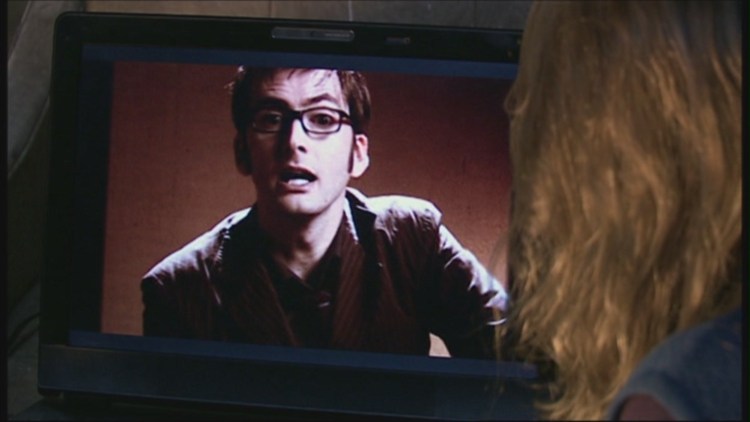The Doctor told you to google it. So, here you are.
The latest two-parter of Doctor Who Series 9, “Under The Lake” and “Before The Flood” feature what the Doctor declares a “Bootstrap paradox” that is central to his plan to win the day. In a rather fantastic monologue, the Doctor describes a story where a time traveler goes back in time to meet Beethoven, only to discover he doesn’t exist, but then becomes Beethoven so the music will exist in the first place.
The Doctor’s monologue is a prelude to his attempts to prevent himself from being turned into one of the ghosts from the drowned ship, which culminate in him creating a hologram that inspires him to create a hologram that saves everyone.
Confused? Don’t be. Just ask yourself this: “Which came first… the chicken or the egg?”
You’re still confused, aren’t you?
Yup.
“The Bootstrap Paradox” is also called “A Causality Loop” which in itself is actually a paradox. In a nutshell, it’s when a future event causes a past event, which in turn causes that first future event. The typical example given is usually “The Grandfather Paradox”:
This all seems kind of familiar.
Oh, you’ve seen it all over fiction including episodes of Star Trek and even past Doctor Who episodes.
Which Doctor Who episodes?
The two that immediately jump to mind are “Blink” and “Time Crash”.
For example, in “Blink” the Doctor is sent back in time by the Weeping Angels, but he knows this will happen because he was given all the relevant information by Sally Sparrow. So, he creates a video that gives Sally Sparrow all the information she’ll need to save the TARDIS, which she will in turn give to the Doctor so he can create the video in the first place.
So… which came first? The Doctor making the video or Sally giving him the information? The answer is… neither. It’s a paradox. One can’t exist without the other.
How is that possible?
Wibbly wobbly timey wimey.
Right. Any other examples?
Oh, we have the mother of all examples. Ready?
Lay it on me.
The Terminator.
No way.
Okay, so check this out: Skynet sends a T-800 back in time to kill Sarah Conner before she can give birth to its nemesis John Conner. In response, the Resistance sends Kyle Reese back in time to save her. Not only does the T-800 fail, but Kyle Reese impregnates Sarah Conner with a boy who grows up to be John Conner.
So… ask yourself: would John Conner have been born if Skynet hadn’t sent that T-800 back in time?
Oh boy.
Yeah, this stuff will fry your head… which is why it’s probably best not to think about it.
The only thing left to ask yourself is… who wrote Beethoven’s 5th?


![Chill Out: It's Our First Look at Mr. Freeze on Gotham [Image]](https://i0.wp.com/overmental.com/wp-content/uploads/2015/11/mr-freeze-gotham.jpg?resize=390%2C220&ssl=1)


Great read, Aaron. I, too, am intrigued by time paradoxes and have written a detailed article called ‘The Bootstrap Paradox Explained’ on http://www.astronomytrek.com/the-bootstrap-paradox-explained/
I believe this kind of thing also occurred in “Day of the Daleks”, the 1972 Pertwee adventure. The guerrillas from the future went back to attempt to stop an explosion from sabotaging a peace conference, but it turned out that it was they themselves who caused the explosion on their trip back.
Requesting credit where credit is due: the term “Bootstrap Paradox” almost certainly originated in reference to Robert A. Heinlein’s 1941 short story “By His Bootstraps,” in which a man goes back in time to effect changes in his life that will ensure his future success, including of course his ability to travel through time. The title obviously comes from the expression “to lift oneself up by one’s bootstraps,” meaning to achieve success with no initial resources, but literally suggesting the physical impossibility of lifting oneself into the air by pulling upward on one’s boots—a very apt image for this type of temporal paradox.